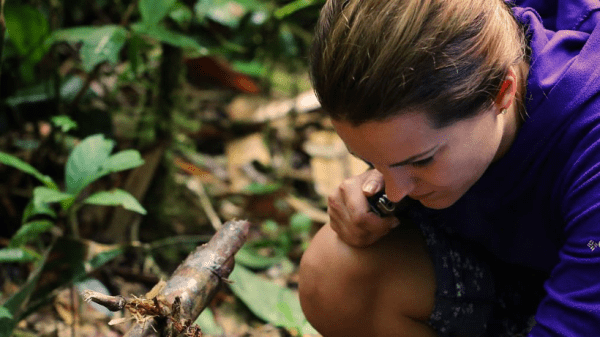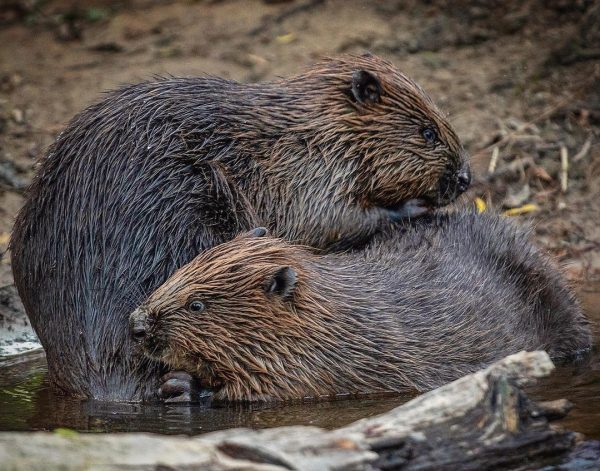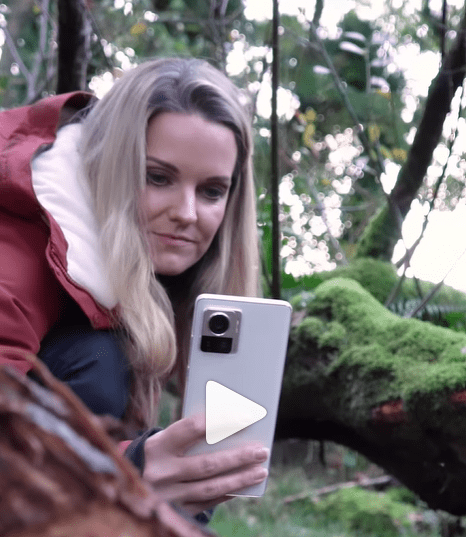Growing up in London, I felt far removed from our natural ecosystem, and I remember always craving the outdoors. My mom used to find me watching ants for hours on end, and she helped nurture this innate fascination within me by introducing me to wildlife documentaries.

As a child, being transported around the planet via film and learning about the beauty and majesty of the planet was my biggest joy. This passion led me to study Zoology at university. I loved learning theory but really yearned to see the animals in the wild. I went on my first expedition to the cloud forests of Honduras to study bats and it was during this time, being surrounded by a pristine ecosystem, that I found my calling to protect endangered species and biodiversity. Rather than staying in research academia, I dreamt of communicating my experience and important messages about the natural world to as many people as possible.

The photo was taken at Tanjung Puting National Park, a lush wildlife reserve located in the heart of Central Kalimantan, Indonesia. Situated in the southeast part of West Kotawaringin Regency, this stunning park is home to a wide variety of wildlife, including orangutans, proboscis monkeys, and exotic birds.
Beavers For Biodiversity
As a Brit, the fact that I live in one of the most nature-depleted places in the world is really upsetting to me. Studies show that the UK only has just 53% of biodiversity left, well below the global average of 75%. On one of my recent expeditions, I explored Cabilla Cornwall as they have reintroduced beavers to their land and I’m keen to investigate the knock-on impact this has and continues to have.

Beavers are the epitome of keystone species. They build dams, dig canals, and create dead wood that becomes a habitat for a huge diversity of species to live in. Beaver dams also prevent soil erosion, trap nutrients and carbon, and slow water flow which helps prevent flooding. They have an important role to play in the fight against biodiversity loss and the climate crisis.
How We Can Help Prevent Biodiversity Loss
Are you concerned about the future of our planet’s biodiversity? The good news is that there are simple steps we can all take to protect it. By making a few changes to our daily habits, such as eating more plant-based meals and composting our food scraps, we can reduce habitat destruction and promote sustainable practices.
Here are some easy ways to get started in protecting biodiversity:
- Eating more plant-based meals can help reduce habitat destruction caused by livestock.
- Reducing, reusing, and recycling can save energy and resources. Don’t forget to compost your food scraps too!
- Supporting local farms and buying from farmers in your area while using reusable containers instead of one-time plastic is another way to make a positive impact.
- When exploring nature, be sure to stay on designated paths and trails to protect critical wildlife habitats. Teach your children and pets to do the same.
- Choose products with eco-labels such as Rainforest Alliance, Forest Stewardship Council, Energy Star, and Fair Trade. Also, check to make sure your buying habits do not harm habitats elsewhere.
By taking these simple steps, we can all do our part in protecting biodiversity and promoting sustainable practices.
How Tech Plays a Role
Technology is at the heart of creating engaging content about wildlife and the natural world. By partnering with Lenovo, I’m able to leverage their technology to capture and edit footage from anywhere, produce higher quality content, and further increase awareness around conservation, biodiversity loss, and ecoadventures.
Click the image to the left and see how technology supported my latest investigation in Cabilla Cornwall.
What's Next?
I’ll be heading to the Maldives in a few months with the Big Blue Foundation to study the effects of ghost fishing nets on the marine life around the islands. We are hoping to remove this plastic pollution and create useful products from this waste instead. Stay tuned!
If you’re interested in my work and want to keep up with my #LenovoInnovators journey, follow along on Instagram @catherinecapon.

